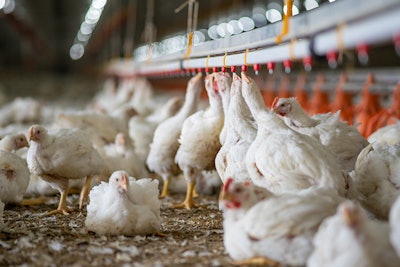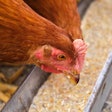
A new, potentially onerous environmental regulation could impact the poultry and egg industries.
The proposal
On March 29, 2023, the U.S. Environmental Protection Agency (EPA) published a proposed national drinking water regulation for six substances known for their resiliency against breakdown. These so-called forever chemicals recently gained much attention for their potential human health risk.
The six substances covered in the proposed regulations are a class of per- and polyfluoroalkyl substances, also known as PFAS chemicals. These chemicals,present since the 1940s, are used to make water resistant fabrics, nonstick cookware and foam to fight fires.
The production of many of these materials ended due to the environmental and health concerns associated with them. Nevertheless, their chemical stability keeps them from degrading and can build up in the environment including in groundwater and surface water.
Issues
Although the EPA indicated its proposing the regulation to protect the drinking water of U.S. citizens and reduce exposure to PFAS substances – which certainly falls within the agency’s responsibility – the proposal demonstrates the EPA’s impulsive and flawed regulatory posture.
To begin, EPA is giving a mere 60 days to develop and submit comments in response to this highly technical proposal.
There are more than 1,400 supporting and related material documents the regulated public should be given time to review as they develop comments in response to the proposed regulation. While 60 days is the status quo for virtually every regulation developed by the current administration, the timetable is woefully insufficient for this proposal.
The rule’s proposal to establish a Maximum Contaminant Level Goal (MCLG) of 4 parts per trillion (ppt) is a serious concern. To give that quantity some perspective, 4 ppt would represent 4 grains of sand in an Olympic-size swimming pool. This level is, in fact, the detection level of the current analytical laboratory tests for quantifying the concentration of these materials in water.
For all practical purposes, this means the allowable concentration of these six substances is zero.
The proposed regulation could most impact the meat, poultry and egg industries by its effect on facilities using groundwater to harvest and process animals.
By providing water to 25 or more people for at least 60 days per year, these facilities operate what is classified as a “non-transient, non-community water system.” These types of systems will be required to adhere to the regulation. This will include sampling and testing, as well as the installation of costly treatment equipment, if the water supply exceeds the MCLG.
Conclusion
A review of the comment docket identifies numerous clauses outlining critical aspects requiring extensive and time-consuming analysis. We can only hope the EPA seeks a fair, scientifically robust process to finalize a regulation with far-reaching consequences and, at the very least, extends the public comment period. The original deadline for submitting comments was set at May 30, 2023.
















